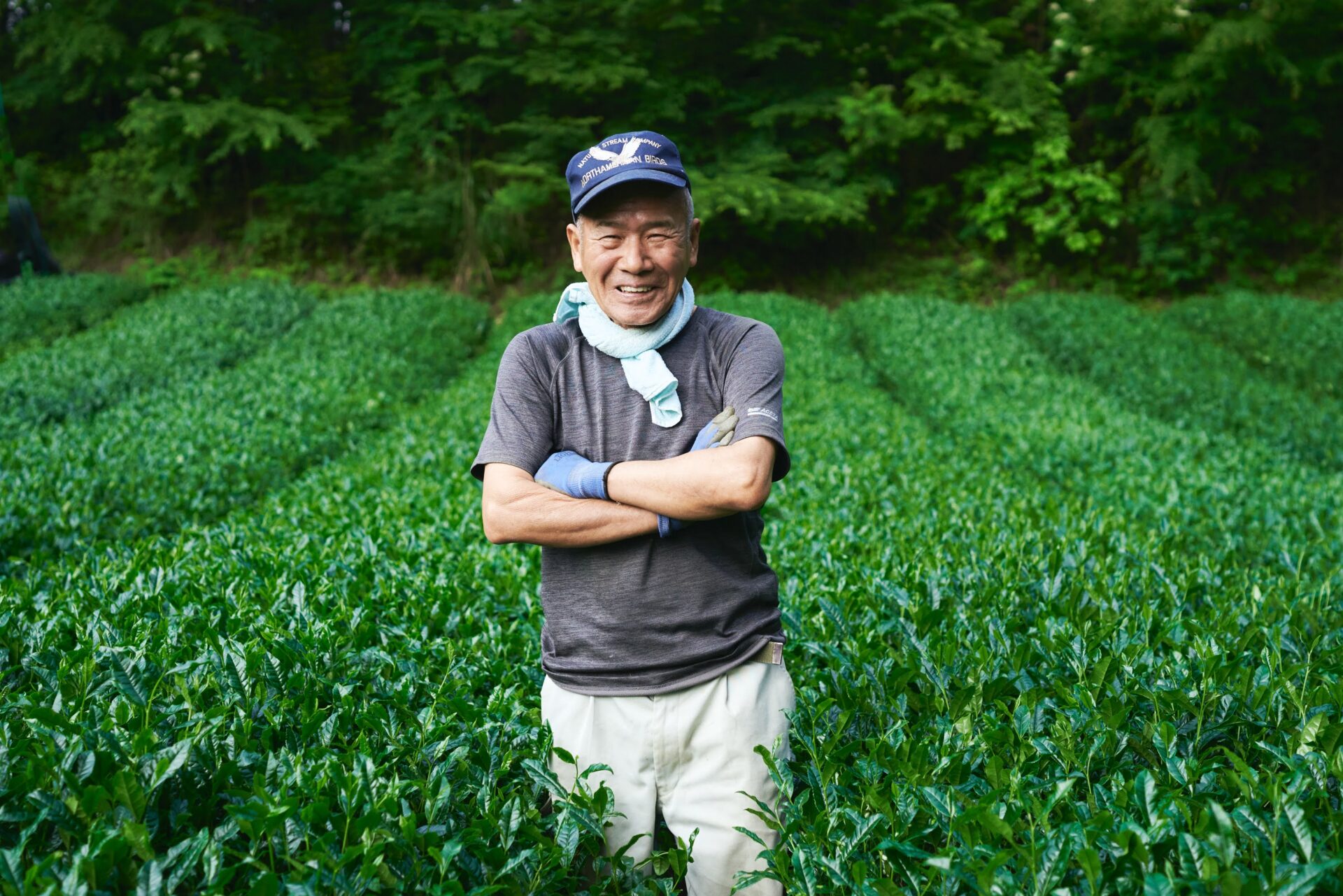The arrival of spring brings the start of the first harvest season for green tea leaves, called “shin-cha” or “new tea.” The fresh green of the tea leaves which withstood the fierce cold weather of the winter are vibrant and vigorous and the rich and fresh aroma of shin-cha is a specialty that can only be enjoyed for a short time each year.
In 2022, the DIG THE TEA team will travel with Ryo Iwamoto, a tea ceremony master and CEO of Japanese tea startup “Tea Room,” to visit various tea plantations around Japan and discover the unique scenes of shin-cha production.
At the end of May, we revisited Shizuoka Prefecture to visit Kobakoh, a tea farm in Fujieda City that produces organically grown Kabusecha. We also visited Sugiyama Farm, a natural farm in Shimizu Ward in Shizuoka City that grows Machiko tea, a variety that is native to the region.
An organic tea plantation surrounded by lush montains
On a sunny day in May, we left Tokyo and headed to Shizuoka Prefecture.
After about an hour into the Shinkansen bullet train ride, the scenery from the train window started to brighten up as we left the cityscape and the sky opened up. As we passed through Kanagawa Prefecture and entered Shizuoka Prefecture, the blue horizon of the Pacific Ocean, which resembles the back of a sardine, came into view in the left window.
The view of lush green mountains filled the window on the right. This region has some of the most sunny days in Japan. In between the ocean and the mountains, an excitement filled us as we felt the power of life around us.
After meeting Iwamoto of TeaRoom at Shizuoka Station, we headed by car to Fujieda City along the Asahina River. This region is famous for Gyokuro tea.
Shizuoka Prefecture is an area where land from the 2,500 meter deep Suruga Bay was pushed up by the Pacific Plate and the Philippine Plate. In other words, there is very little flat land. As we drove up and down the hills, it was hard to keep track of where we were driving, even while looking at a map.

This mountainous region has long been known as a production region for high quality tea due to its slopes with good sunlight, precipitation, and drainage.
The tea trees planted in all corners along the road leave a big impression. The tea trees are carefully planted in neat rows along the long, narrow fields by the roads, in roundly trimmed bushes that are commonly seen in Japanese gardens.
We also saw some abandoned tea fields, which had been neglected and were being reclaimed by nature.
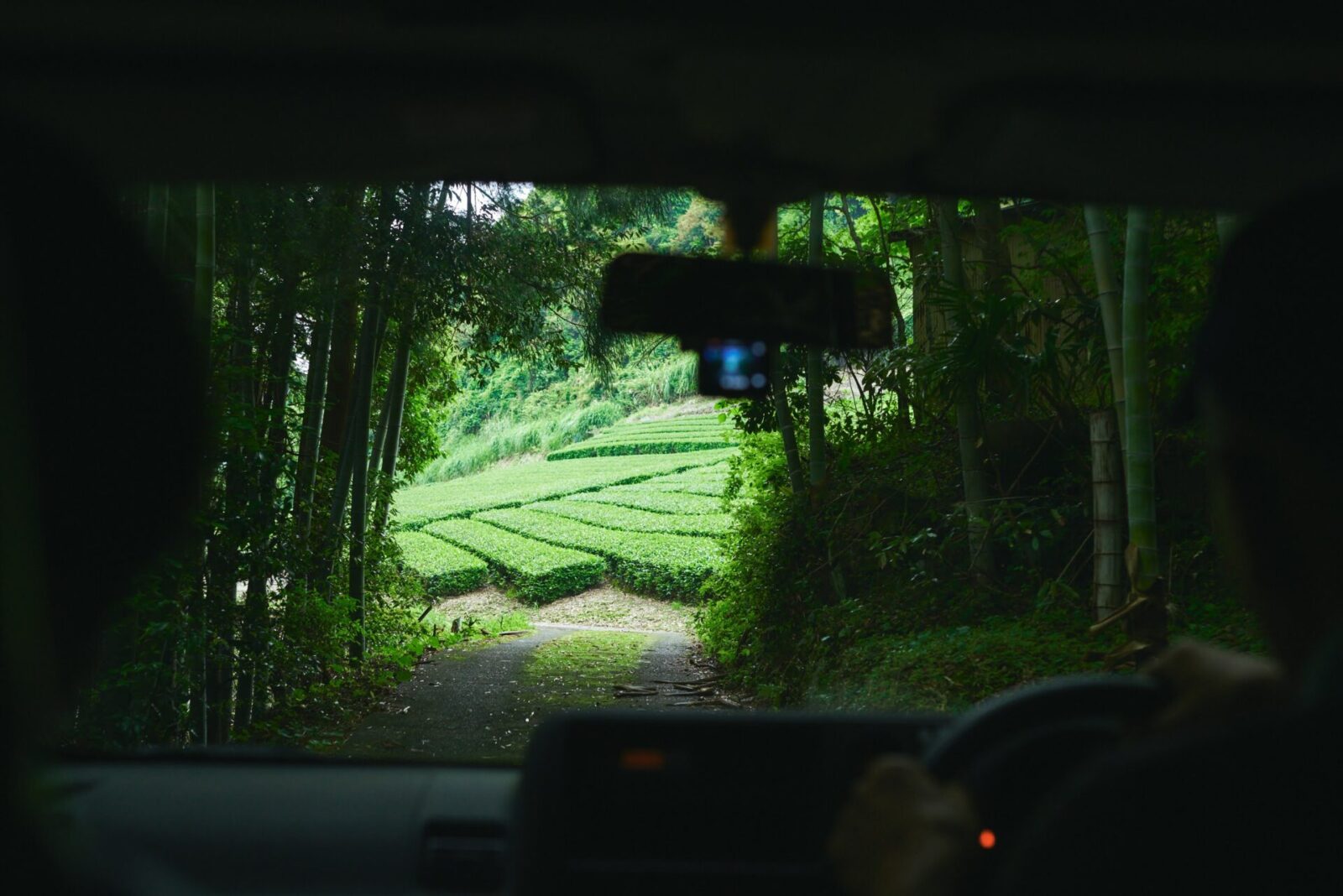
Through the hour drive, we see mountains, tea plantations, then more mountains and tea plantations.
It feels like we are characters in a story that begins with the line, “Deep in the mountains and beyond,” as we drive along route 210 along the Asahina River.
Misty air was rising from the folds of the mountains colored in various shades of green. The clear water flowing softly in the pools of the river is said to have wild eels, which are very rare these days. It is said that the mist that rises from this river helps to grow high quality tea.
The key to harvesting tea on steep slopes
The Kobako tea farm was located in a village a little off route 210. Kobako owns several tea plantations in the neighborhood, producing mainly organic Tencha, Gyokuro, and Kabusecha teas. Tencha is the tea leaves used to make powdered green tea. Tencha, Gyokuro, and Kabusecha are all grown under a cover that blocks out sunlight.
It is the harvest season, and the harvested leaves are quickly sent to the factory production line. Fresh tea leaves go bad quickly, so the entire process, from harvesting to processing, must be done at once. We arrived at the farm just as the production line was on break.
“Hello.”
Yoshiaki Kobayashi, the representative of the company, smiled as he greeted us from inside the tea factory. His whole body was slightly tinted in green.
Not metaphorically, but he was actually green. Upon a closer look, we saw that the powdered tea leaves had covered not only his work clothes, but also the backs of his hands and the sides of his nose. It was clear that he had been busy working in the factory until just moments before.
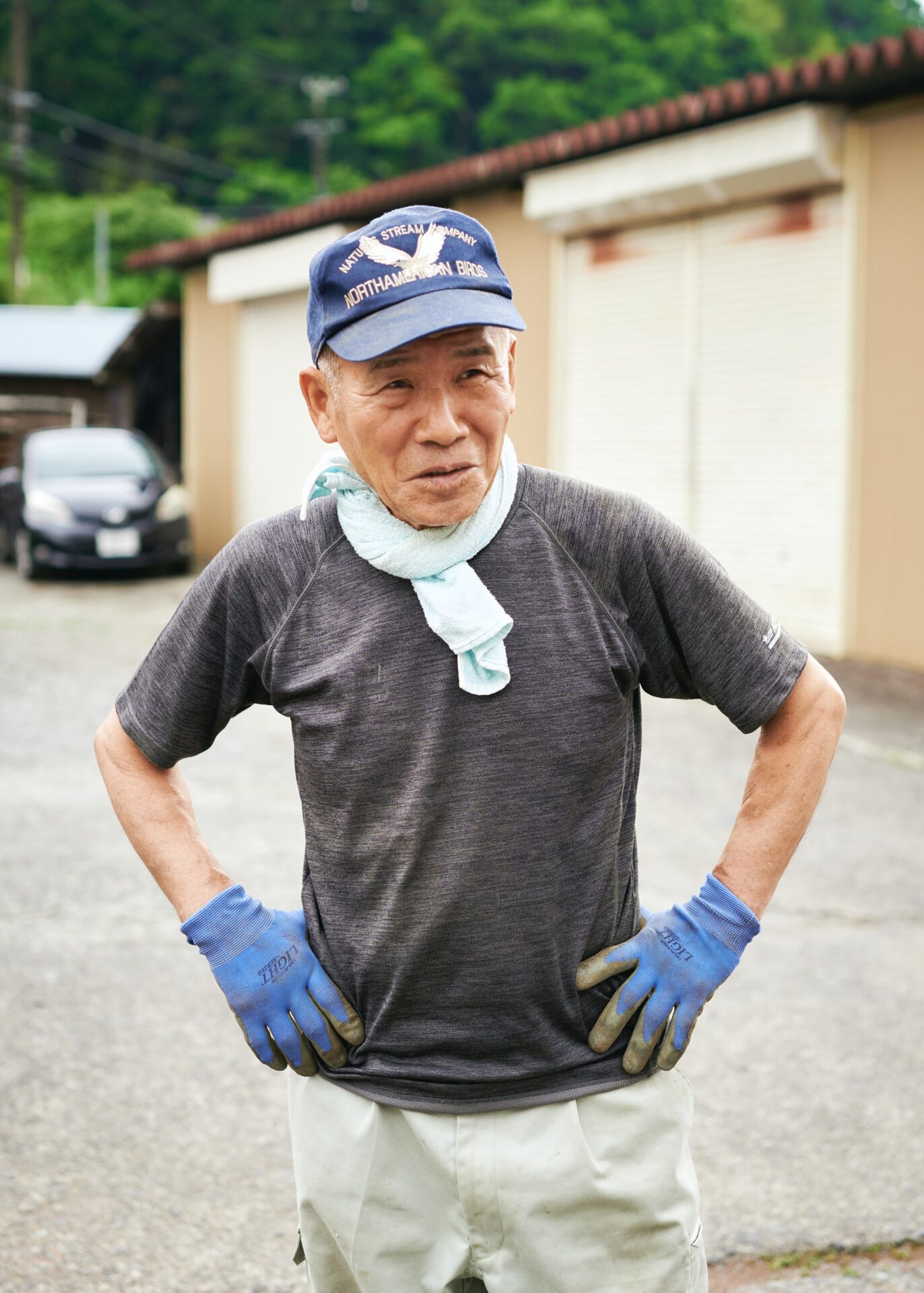
However, Kobayashi did not show any fatigue as he said,
“Well, why don’t we go see the tea plantations that we are harvesting right now. You can see the people up in those mountains are working right now.”
The area he was pointing was quite high up in the towering mountains. The slopes are so steep it hurts our neck looking up. We were already pretty high up in altitude, but the plantation he was pointing up was a further 100 meters high. From where we stood, although they looked like mere peas in the distance, we could see that there were people working.
We hopped in Kobayashi’s car and drove up the slope for five minutes. The road was even steeper than before and it was so narrow that if we encountered another oncoming car, we wondered if it could pass. The car drove uphill and downhill through this narrow road that was like a rope going through a bamboo grove. It was like the car was a tiger running through the mountain bushes. At this point, we realized how little we knew or were prepared for the mountains of Shizuoka.
As we sat in the back seat, we held onto the side grips to keep from being thrown out of our seat. As we rapidly ascended into higher altitudes and we began to worry about whether it was even possible to turn the car around, it made a sudden stop. We had arrived at the tea plantation that we saw from below.
The tea harvest was in full swing in the open fields on the mountain top.
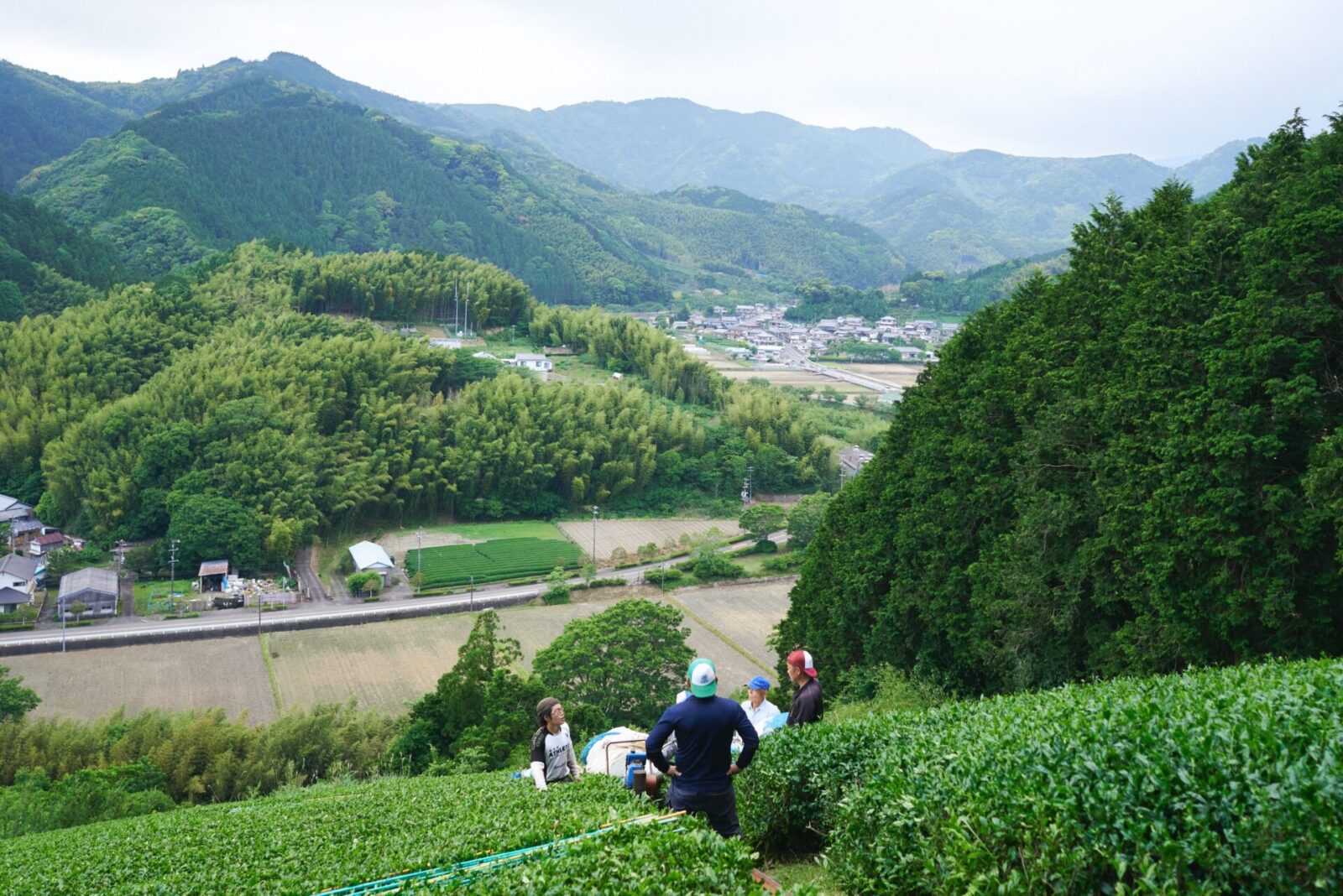
It is said that 38 percent of the mountainous tea plantations in Shizuoka Prefecture are on slopes angling at 15 degrees or more, so this plantation must be one example. The slopes feel as steep as an intermediate level ski slope but the tea trees look healthy as their glossy leaves shimmer in the sun.
A farming monorail runs along a small path that descends down the tea plantation.

Simply keeping one’s balance is difficult on this slope, where one could easily fall and tumble, so it seems like an extremely difficult task. Nonetheless, many of the workers are elderly.
The tea pickers work in teams, with two people holding a large bow-shaped tea mower (portable tea picker) between the hedgerows and trimming off the fresh leaves and cutting the bushes to a certain height. The tea mower is equipped with a large bag that looks like the white bag Santa Claus carries, and the harvested leaves are collected in the bag.
One person is in charge of carrying the bag and follows behind. Kobayashi tells us, “Although it looks easy, it’s actually quite tricky. Three people have to work on it in perfect unison.”

During the harvesting season, everyone in this region goes around to their family and friends, distant relatives and neighbor’s tea farms to help with harvest. Kobayashi says that the key to harvesting tea is teamwork and comradery to help each other out.
“We have all worked and played together in the tea fields since childhood so that’s why we work so well together.”
“That’s right. We were born and raised among tea.”
Behind such cheerful conversation and humor, we can see that there is a strong bond. Even on this day, they drive through these mountains to pick and process tea from early morning till night. We are in awe of their energy and wonder if there is some secret magic ingredient in the tea.
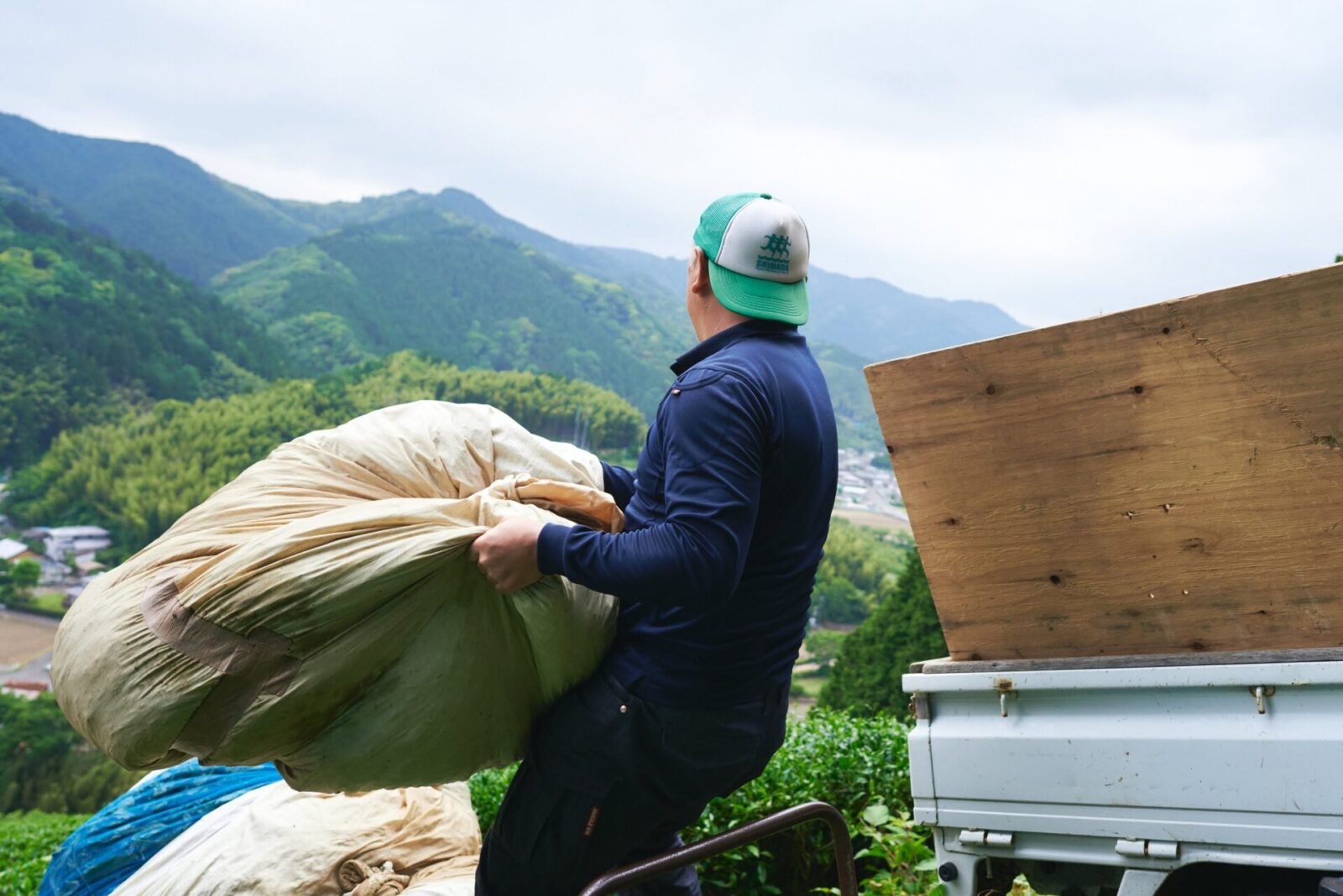
Atop the tea plantain hill, the Suruga Bay glistens
We were told that a Kabusecha tea plantation that was located at an even higher altitude was being harvested so we went to go see it.
We hesitated slightly, as we thought about going to an even higher altitude.
Kabusecha is made by completely covering the rows of tea trees with a black cover to block direct sunlight for about one week to ten days before harvest. This brings out the flavor and sweetness of the tea. For Gyokuro tea, the leaves are covered up for even longer.
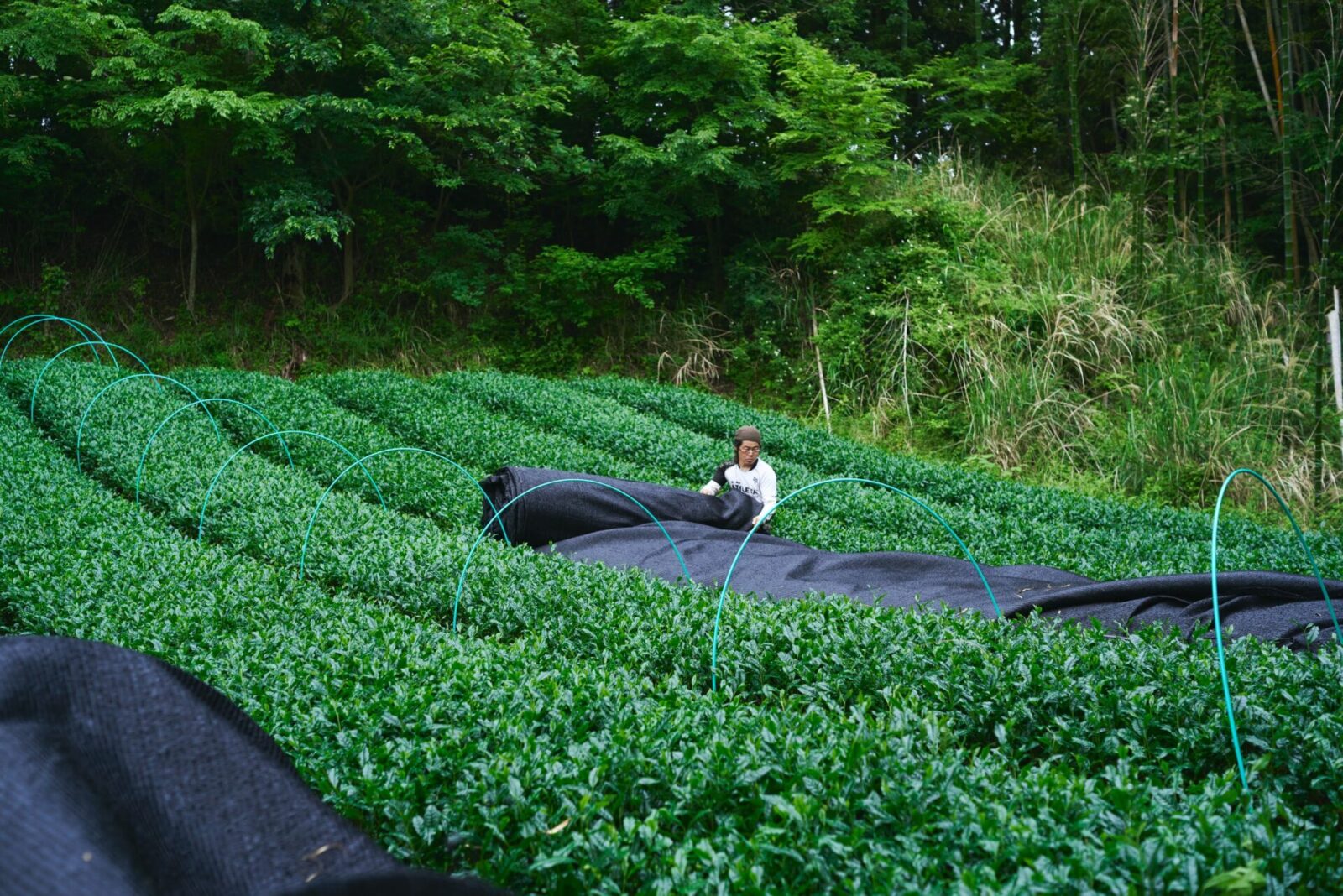
At the tea plantations, the leaves are harvested from the one end that is uncovered first. This plantation is on relatively flat land so they were using a picking machine that could be ridden.
“There is another tea plantation even higher up. Do you want to go see it?”
Even higher? We were almost knocked off our feet in surprise, but we jumped onto Kobayashi’s car once again and soon his trusty car was zooming up the winding mountain road.

What distance and height we traveled as we followed Kobayashi’s lead.
Looking up into the distance, beyond the lush green tea fields, we saw the sparkling blue of the Suruga Bay between the mountains. We could feel the wind of the sea come up through the tea fields.
“It’s a nice view, isn’t it?”
As we listened to Kobayashi’s words, we took deep breaths and took in the surroundings.

A new tea reminiscent of cherry blossom leaves
Our next stop was to Sugiyama Farm, a natural farm in Shimizu Ward of Shizuoka City. Here, they are cultivating a new variety of tea called “Machiko.”
Machiko is a rare variety of tea that contains an aromatic component called coumarin, which gives off a unique aroma that is similar to cherry leaves. In fact, coumarin is also found in tonka and cherry leaves, which is often used in making Japanese sweets. Japanese people recognize the flavor from eating “sakura mochi” or cherry blossom rice cakes.
The tea plantation we visited was tucked away so deep in the mountains we could hardly believe it until we saw it.

The tea plantations were shaped like a Japanese fan, in a circular sector shape along the roads of the mountain.
It looked similar to a photo of a tea plantation in Darjeeling, India that I had seen before. There was such a beauty to these fields that it lured us into wanting to walk among them.
Besides the occasional sound of a car driving by, the only sound in the fields were of the soft flowing river nearby. In the summer, they say that fireflies appear in the river. Fireflies can only survive in areas with clean, flowing water, and we can only imagine how beautiful and dreamlike it must be to see them flying among the green tea trees at dusk.
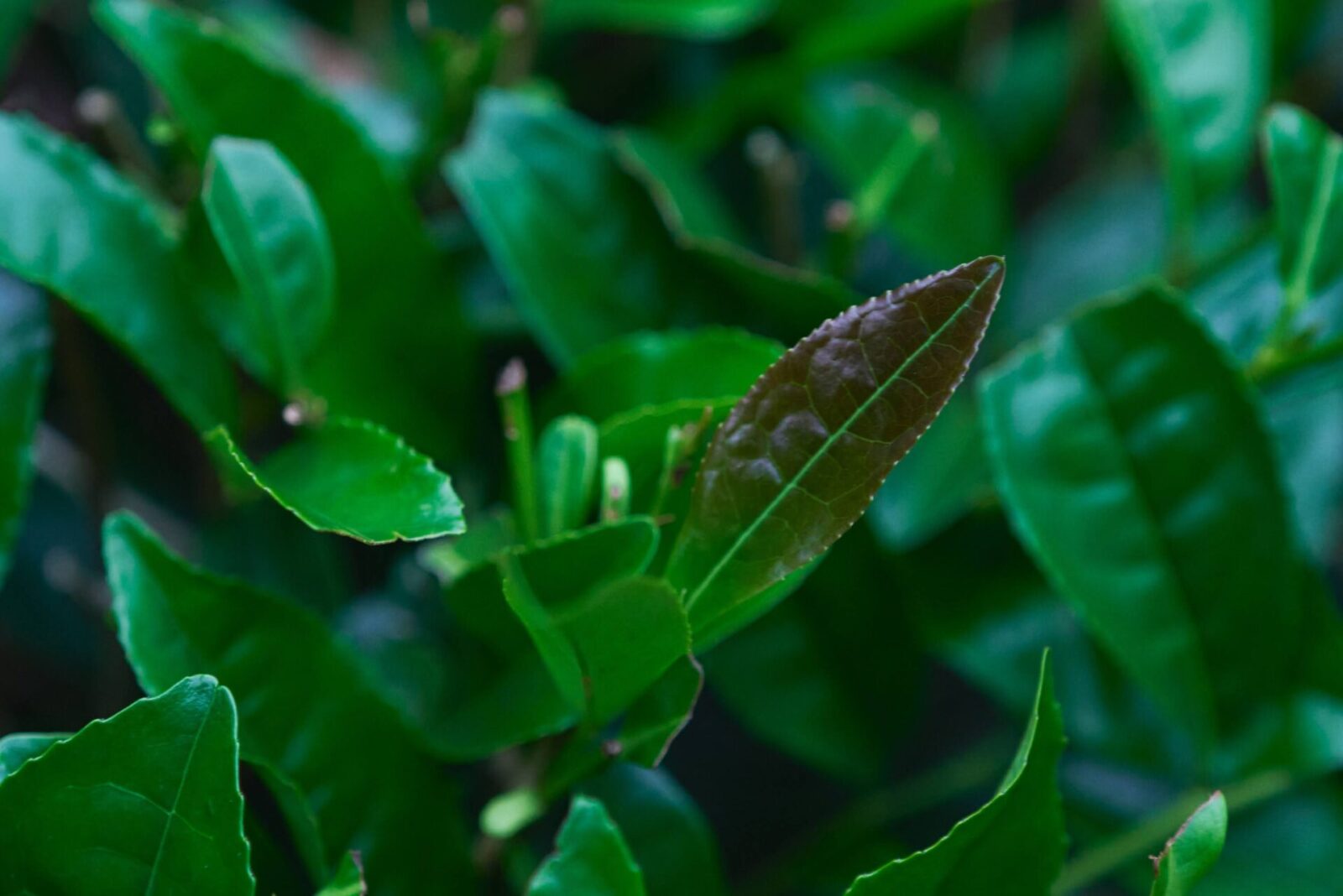
The color of the new Machiko tea leaves have a slightly darker and purple tint compared to the tea plantations we visited before. This color is another unique characteristic of this variety.
We picked a leaf off the tree and rubbed it between our fingers. It had a cool minty feel and a nostalgic aroma of cherry leaves.
Machiko, a green tea of the new generation, garners attention from overseas
Machiko is also grown outside of the Shimizu Ward, but about ten years ago, the tea farmers of this region worked with the agricultural cooperative and the local government to research and develop a production method that enhances its unique aroma. The official name of the tea is “Shizu7132.”
Takayoshi Sugiyama, the representative of the farm who guided us, told us that it has been ten years since they started organic cultivation of Machiko in their fields.
The region was known for being shaded by fog for half the day, so he believed that it was well suited for making organic tea. Ever since, through trial and error, he has been developing his farming techniques.
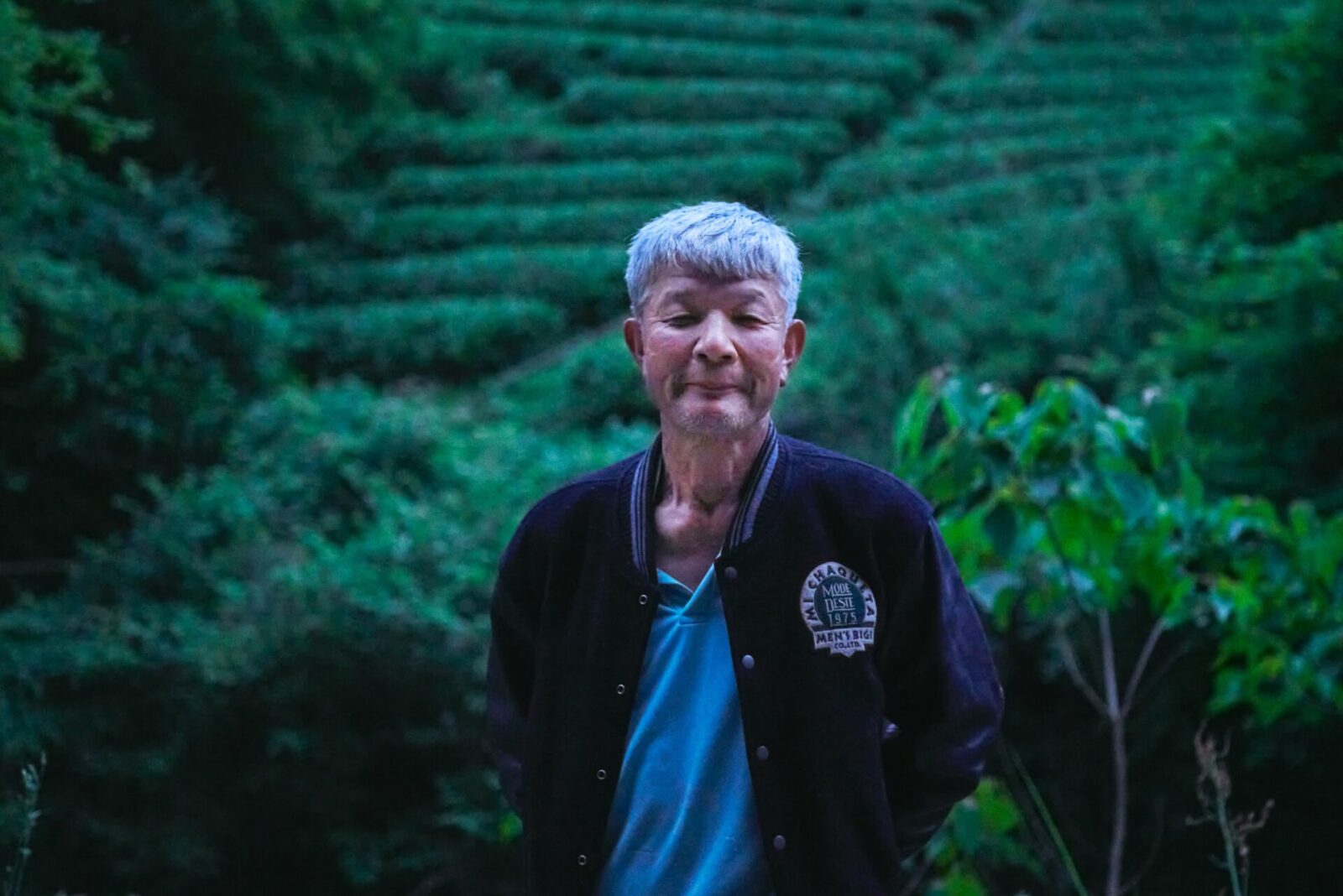
Japan’s humid climate makes it prone to problems with pests and diseases. It must have been a challenge to develop an effective production method.
On top of that, in order to produce enough volume to have a factory process the tea, it required over 2,000 square meters of tea fields to ensure a certain quality and quantity.
Sugiyama’s expression is soft as he talks about his meticulous work, from carrying compost up to the top of the fields using farming monorails on the steep slopes to apply fertilizer, to drying the tea leaves after harvest to prevent dew.
“The methods of tea cultivation are a result of massive amounts of knowledge and techniques that have been passed on through multiple generations and they have evolved little by little. My hope is to share this precious knowledge to as many people as possible by providing them with delicious tea.”
Their carefully grown organic tea has also become popular overseas and is in high demand.
At Sugiyama Farm, they are actively cultivating new varieties of tea when they replant their fields, in addition to their traditional varieties. They hope to create new teas for the new era.
“Until recently, teas blended with green tea were the most popular, but recently, varieties that have more unique characteristics are growing in popularity. We are offering new ways of enjoying tea by planting teas like Machiko that have unique flavors.”
As they treasure and pass on the cultivated knowledge of past generations, this farm is always looking to the future.
Through trial and error and hard and careful work, the tea producers we visited all exhibited pride and confidence in the tea that they cultivate.
It is through their hard work that we are able to enjoy the delicious shincha teas every year.
Today, as I pour hot water on the tea leaves in my tea pot, I watch the tea leaves open slowly.
As I savor the color, aroma and flavor of the tea, I remember the beauty of the tea fields that we visited that day, high in the mountains.
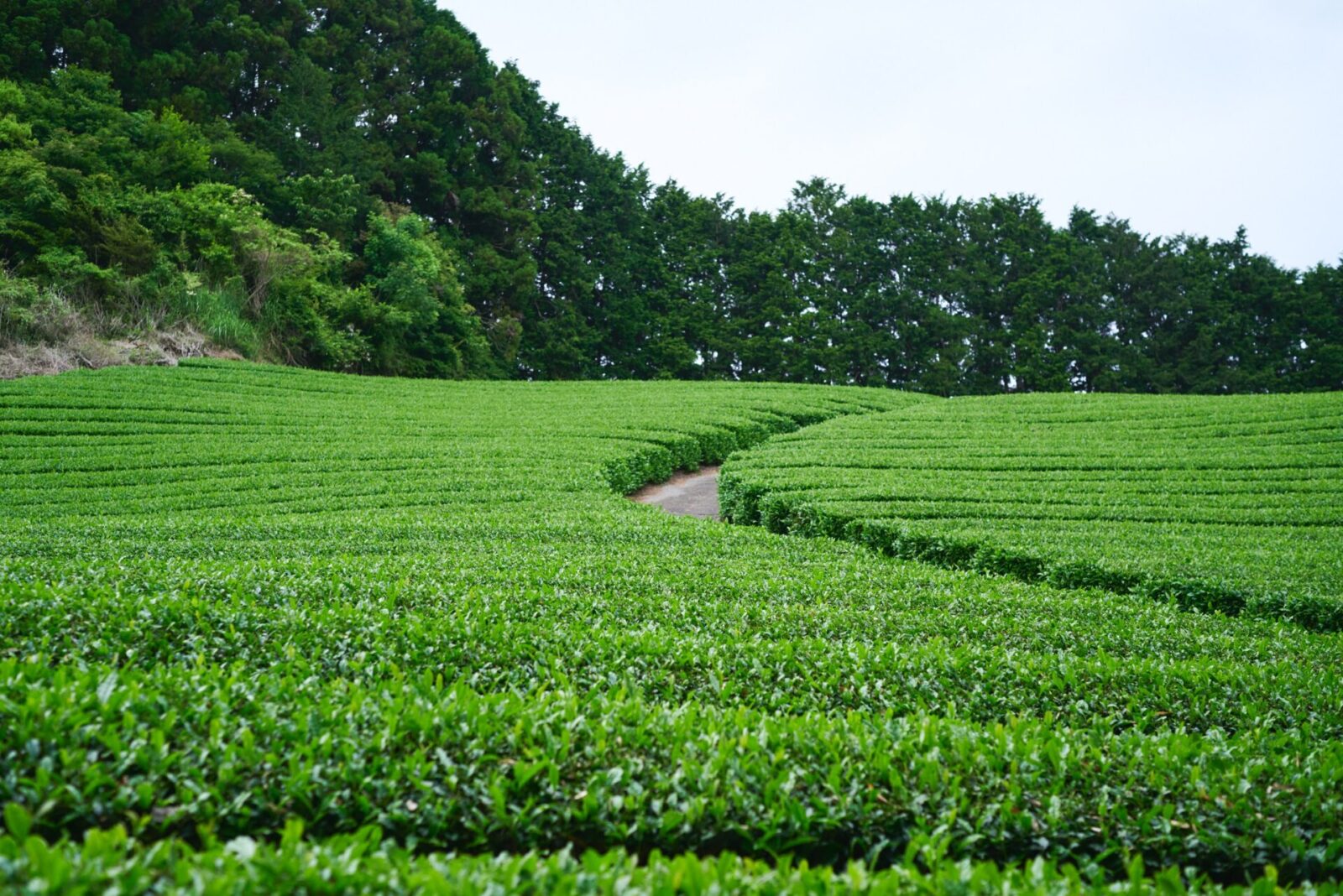
Photo: Umihiko Eto
Translation: Sophia Swanson
Born in Tsuruoka City, Yamagata Prefecture. A writer and culinary expert. Writes about food, holds cooking classes, assists in product development and writes recipes for TV, magazines, radio and other media outlets. Books include “パッと作れて旨い! 居酒屋おつまみ” (Quick and delicisou izakaya dishes) (published by Takarajima-sha) and more. Serves as ambassador for Yamagata Tourism and the Tsuyahime rice brand. Member of the Yamagata Prefecture Rice Brand Promotion Committee and ambassador of tourism for Tsuruoka City.
Yuko Souma is the director of Delightful LLC and was born in 1976 in Chichibu City, Saitama Prefecture. Souma began their career working as an assistant to editor and writers at a production company while studying at Waseda University’s Faculty of Letters, Arts and Sciences. In 2004, Souma was an editor and member of the launch team for the free magazine R25 at Recruit Co., Ltd. They left that role in 2010 and has since produced and edited for magazines, books, online publications, booklets for corporations and municipal governments, and owned media.
